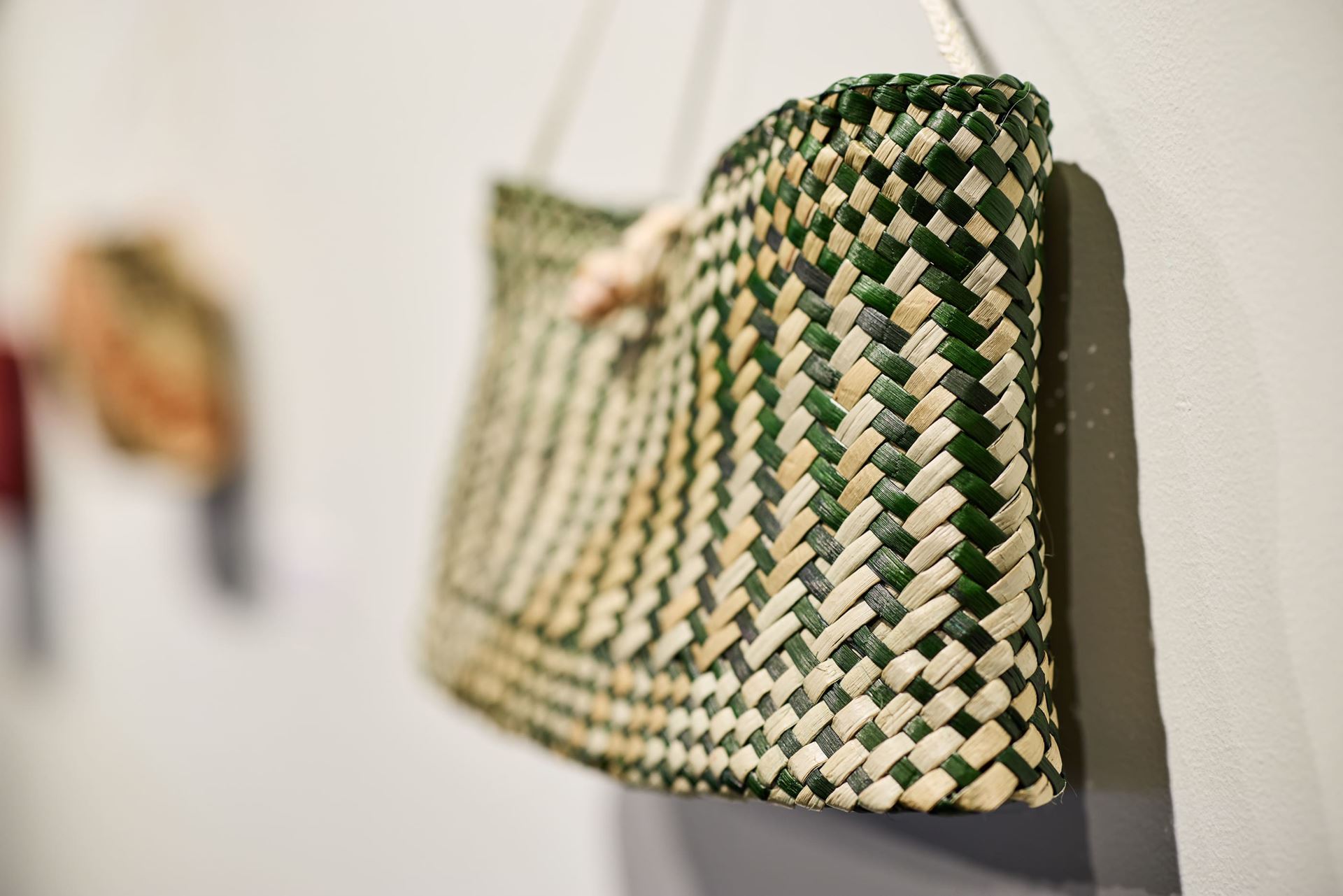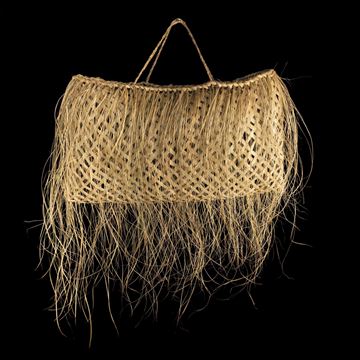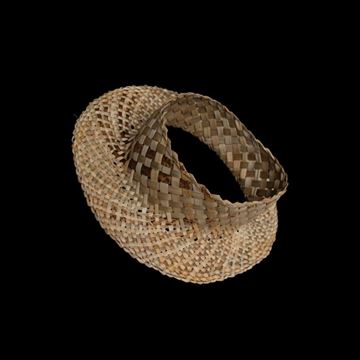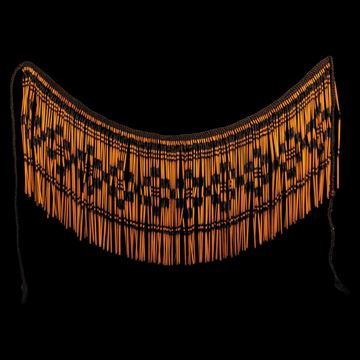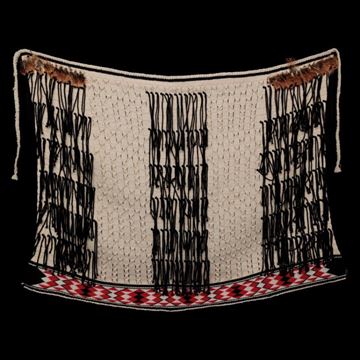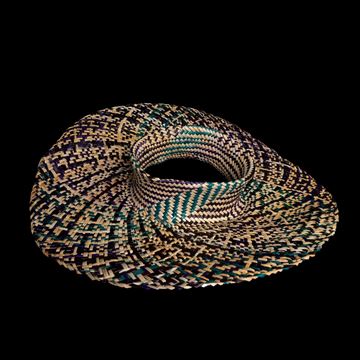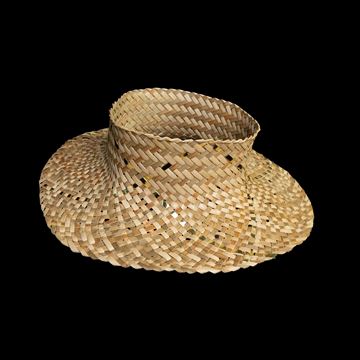Te Rito, named after the baby shoot at the heart of the flax bush, was built in 1994. At this school, male and female students have the honour of learning traditional Māori weaving techniques, as taught by experienced tutors. This tohu is for 2 years and is 40 hours per week, 47 weeks of the year.
Would you like something custom made especially for you? Commission a piece here
Kete Kai - 5830RW
Kete Kai is a food gathering basket that is typical used to house food from the ocean or the land. Kete kai was used for every type of food that was gathered. You were not allowed to mix land food kete with the ocean food kete as it was tapu. The pattern on this kete kai is taki tahi and the holes are called puareare.
Material: Harakeke
Measurements: 340mm x 490mm
$620.00
Pōtae - 5142ML
This Pōtae is a contemporary hat woven with traditional Māori weaving methods.
Material: Harakeke
Circumference: 21 inches
$250.00
Pōtae - 5143ML
This Pōtae is a contemporary hat woven with traditional Māori weaving methods.
Material: Harakeke
Circumference: 21.5 inches
$250.00
Tāniko Belt - 2726TE
Tāniko weaving produces a relatively stiff and unyielding fabric, it was traditionally used as a decorative border on fine cloaks of the kaitaka and paepaeroa types. Often several different strips of tāniko appeared on up to three sides of a cloak.
Material: Acrylic Cotton, Leather Lining, Macrame Silks
Measurements: 1150mm x 40mm
$990.00
Piupiu (Tāne) - 5832RW
The word 'piupiu' means 'to swing’ and is also the name for a skirt with free-hanging strands. Piupiu can be worn either around the waist or across one shoulder. They were made in many types of material and styles.
Material: Harakeke & Muka
Measurements: 1100mm x 420mm or 43 inches
$1,890.00
Piupiu (Tāne) - 5954AF
The word 'piupiu' means 'to swing’ and is also the name for a skirt with free-hanging strands. Piupiu can be worn either around the waist or across one shoulder. They were made in many types of material and styles.
Material: Harakeke
Measurements: 32.5 inches
$1,090.00
Kākahu (Contemporary) - 1630WK
The kākahu takes inspiration from traditional Māori cloaks. A kākahu is mantle of prestige and honour. This kākahu is made from mirowhiti miro (mop yarn) also incorporating materials that represent different types of kākahu including but not limited to kahu huruhuru (feathers) and tāniko.
Material: Cotton, Mop Yarn, Wool, Feathers
Measurements: 875mm x 775mm
$3,900.00
Kākahu (Contemporary) - 1731RA
The kākahu takes inspiration from traditional Māori cloaks. A kākahu is mantle of prestige and honour. This kākahu is made from mirowhiti miro (mop yarn) also incorporating materials that represent different types of kākahu including but not limited to kahu huruhuru (feathers) and tāniko.
Material: Cotton, Mop Yarn, Wool, Feathers
Measurements: 1016mm x 762mm
$4,400.00
Pōtae - 6778AY
This Pōtae is a contemporary hat woven with traditional Māori weaving methods.
Material: Harakeke & Metallic Foil
Circumference: 23.5 inches (60cm)
$420.00
Pōtae - 6779AY
This Pōtae is a contemporary hat woven with traditional Māori weaving methods.
Material: Harakeke & Metallic Foil
Circumference: 21 inches (53cm)
$390.00

